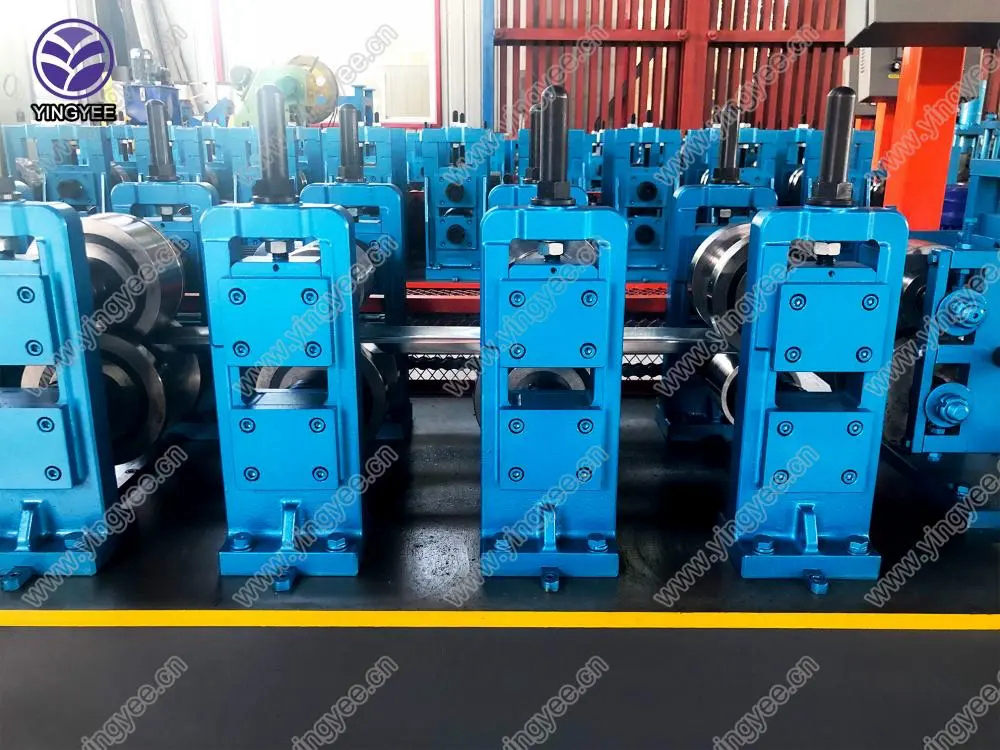Cold Roll Forming Machinery Innovating the Manufacturing Process
Cold roll forming machinery plays a pivotal role in modern manufacturing, reshaping the landscape of how metal products are created. The cold roll forming process involves bending flat metal sheets or strips into specific shapes using a series of dies and rollers at room temperature. This innovative technique has gained popularity due to its numerous advantages over traditional manufacturing methods, such as stamping or welding.
Understanding Cold Roll Forming
The cold roll forming process begins with the preparation of the metal material, typically in the form of coils. These coils are fed into the forming machine, where they pass through a series of rollers and dies, gradually shaping the metal into the desired profile. The process is continuous, which enhances efficiency and minimizes waste. The final product can take various forms, including structural beams, panels, channels, and custom shapes tailored to specific applications.
One of the key features of cold roll forming machinery is its ability to produce intricate designs with high precision. The dimensions and tolerances achieved in this process are critically important in industries where accuracy is mandatory, such as automotive, aerospace, and construction. With the capability of forming complex geometries, cold roll forming is ideal for producing components like brackets, frames, and various structural elements that require high strength and durability.
Advantages of Cold Roll Forming Machinery
Cold roll forming offers several distinct advantages that make it a preferred choice for many manufacturers
1. Material Efficiency The cold roll forming process is known for its minimal waste production. Unlike cutting operations that remove material, cold roll forming utilizes almost the entire material, making it a cost-effective choice in terms of raw material usage.
2. High Strength The process not only forms shapes but also introduces work hardening in the material, which increases its strength without the need for additional treatments.

4. Speed and Efficiency The continuous operation of cold roll forming machines allows for high production rates, which is essential for meeting market demands without compromising quality.
5. Reduced Labor Costs Automation in cold roll forming equipment minimizes manual intervention, reducing labor costs and the potential for human error.
6. Improved Surface Finish Cold roll forming typically results in a better surface finish compared to other forming processes, which can reduce the need for secondary operations like painting or plating.
Applications Across Industries
Cold roll forming machinery is employed in a wide range of industries. In construction, it is utilized to create metal framing systems, roofing products, and various structural components that are integral to building infrastructure. The automotive industry benefits from cold roll formed parts for chassis, supports, and brackets, where weight reduction and strength are critical.
The HVAC (heating, ventilation, and air conditioning) sector also employs cold roll forming for ductwork, ensuring efficient airflow and reduced energy consumption. Additionally, manufacturers in the telecommunications industry use cold roll forming to create enclosures and supports for electronic equipment.
Future Trends in Cold Roll Forming
The future of cold roll forming machinery looks promising as advances in technology and manufacturing techniques continue to emerge. The integration of automation, robotics, and Industry 4.0 concepts is paving the way for even greater efficiency and precision in production. Furthermore, the ongoing emphasis on sustainability and eco-friendly manufacturing processes is positioning cold roll forming as a go-to solution due to its inherent material efficiency and reduced waste generation.
As industries evolve, the adaptability and versatility of cold roll forming machinery will play a crucial role in meeting the demands of a rapidly changing marketplace. Whether producing components for renewable energy systems or lightweight structures for electric vehicles, cold roll forming stands out as a key player in the future of manufacturing.
In conclusion, cold roll forming machinery is revolutionizing the way metal products are manufactured. With its diverse applications and significant advantages over traditional methods, it is becoming increasingly essential in various sectors. As technology continues to advance, these machines will undoubtedly lead the charge toward a more efficient and innovative future in manufacturing.